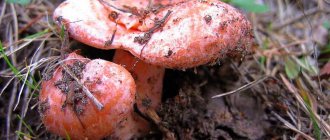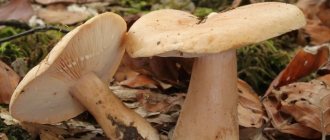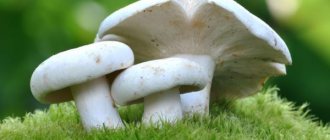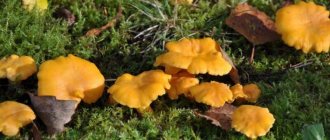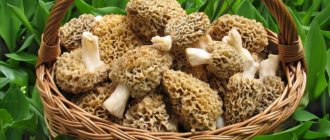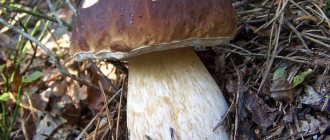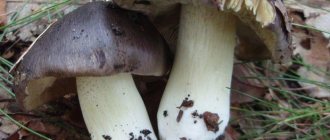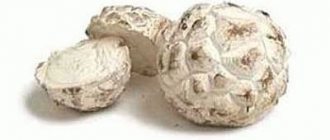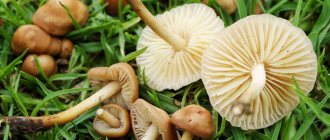Rowers (tricholomas) are medium-sized ground mushrooms that prefer coniferous surroundings and grow in groups. The unprepossessing appearance and specific smell scare away lovers of “quiet hunting”. Many species of the family are indeed not suitable for consumption. It is not easy to be able to distinguish between edible and poisonous row mushrooms. But it’s worth learning, because dishes made from triholome are delicious.
What does a row mushroom look like?
In total, approximately 100 varieties of rows are known, among which there are poisonous mushrooms. Therefore, you need to know what edible, conditionally edible and inedible specimens look like. A description of row mushrooms and photos will help with this - further in the text.
Important! If a person is not confident in his knowledge and experience, it is better not to take a mushroom than to allow a situation that threatens health and life.
The mushroom body of the row consists of a cap and a stalk. Externally, representatives of the rowan family are distinguished by variability of characters. The caps of young specimens in various species have the shape of a ball, cone or bell. In an adult mushroom, the cap straightens as it grows. The diameter is from 3 to 20 cm. It has a noticeable but small tubercle in the middle, and the edges can be wavy, straight, tucked or everted.
The skin of the mushroom, depending on the species, is dry, velvety or smooth, slippery with mucus, pure white or all shades of yellow, green, red, brown. As it develops, the color also often changes.
Under the cap of the tricholoma there are spore-bearing plates, which, depending on the type, are thin, often located, or sparse, thick, fused with the stalk. The spores themselves are smooth, elongated, whitish or transparent, and the spore powder is either white or brown.
The stem of the rows can be completely bare, scaly or weakly fibrous. Color pinkish-brown. Some varieties have purple. The shape of the legs of mushrooms of this genus is varied: cylindrical, club-like, thickened at the cap or at the base. The remains of the blanket protecting the spore-bearing layer, if present, are in the form of a fibrous ring under the cap.
Characteristic features of the species and collection rules
The genus includes species of all mushroom categories: from edible to poisonous. The rows are characterized by the following general features:
- a fleshy convex cap that acquires a flattened shape as it ages;
- cracked edges;
- presence of records;
- cylindrical leg;
- thick pulp;
- powdery odor in many species.
It is best to collect paths in the first half of autumn. It is not difficult to look for mushrooms, because they grow in a row and in large groups. You can distinguish edible and poisonous species by appearance, smell or reaction of the pulp to air.
Attention!
You cannot break the mycelium - the paths must be cut with a knife. A broken mushroom place leads to the death of an entire family.
When the rows grow
Almost all types of row mushrooms are autumn. Some of them appear as early as mid or late August. Individual specimens in spring - April, May. But mostly fruiting occurs from the beginning of September until the November frosts. There are varieties that grow in winter without fear of frost. The peak of ripening is observed after the air cools to +15°C, that is, in October. In this case, the optimal soil temperature should be about +20°C.
Crimean species bear fruit all the time, except in late winter, but the most “meaty” mushrooms are still obtained in the autumn.
Types of rows
There are 45 species of row trees growing in Russia. According to their edibility, representatives of the genus are divided into subgroups:
- edible;
- conditionally edible;
- inedible poisonous.
Edible
Many of the edible species are extremely tasty. Some edible row mushrooms with photos and descriptions are presented below.
- Gray rower (Tricholoma portentosum) is a popular edible mushroom. The cap is light gray and fleshy (up to 12 cm). While the row is young, it has a cone-shaped appearance, but in older ones it is unevenly flat. The center of the cap is darker than the edges. The leg is gray or whitish. The pulp is slightly yellowish when cut. The aroma is weak, the taste is not strong.
- Lilac-legged row (Lepista saeva, Blueleg) - belongs to the category of southern edible mushrooms. The cap (up to 15 cm) is yellowish-cream with a purple coating. The leg is low purple, less often light with purple veins. The pulp is dense, thick, very tasty. Fruiting is from April to October.
- Mayweed (Calocybe gambosa) is a delicious edible mushroom. The hat in young specimens is hemispherical in shape, while in older specimens it is convex and spread out (up to 10 cm). From yellowish to white. The leg (up to 7 cm, 1-3 cm thick) expands near the ground. The pulp is snow-white, dense. It grows in the Central Asian steppes, China, and Mongolia, where it is also highly valued for its medicinal properties. Fruiting – May, June.
- Booted row (Tricholoma caligatum, Matsutake). Translated from Japanese, “matsutake” means “pine mushroom.” It has the smell of pine and the delicate taste inherent in noble edible mushrooms. The silky brown cap (from 6 to 20 cm) cracks in adult rows. The flesh is snow-white, the leg is strong, whitish on top and brownish at the base (5-20 cm and up to 2.5 cm thick), sometimes bends towards the ground.
Conditionally edible
Mushrooms of this group are often bitter. They are best eaten young.
- The row is purple. The cap is up to 15 cm deep purple in color with light lilac flesh. In a young tricholoma it is shaped like a hemisphere, in an adult it is flat. The leg (up to 8 cm) is lighter than the cap and stiffer. The elastic flesh is very dense.
- The row is earthy gray. A mushroom with a cone-shaped cap (up to 9 cm), growing, takes on a flat shape with a tubercle in the center. They are often called little mice. The silky skin is mouse-brown or the color of brickwork. The snow-white leg (up to 9 cm in height) of an aging mushroom becomes hollow and yellow near the ground. The elastic pulp has almost no taste, but has an unobtrusive powdery odor.
- Poplar row. Valued in the steppes, where there are always few mushrooms. This mushroom is short (up to 6 cm) with an uneven light brownish cap, the edge of which often cracks. The leg is cylindrical, up to 3 cm thick. The pulp is dense, white.
- The row is yellow-red. The cap is from 7 to 15 cm, with a matte yellow-orange or yellow-red surface, on which there are small scales. The leg is cylindrical in shape from 5 to 10 cm, the same color as the cap, widened at the base.
- The row is white and brown. The cap is mucous, reddish-brown, flattened with a tubercle in the middle and wavy edges. There are noticeable darkened veins on the surface, and the edge is pale. The leg is reddish-brown, velvety with a white spot. The pulp is white with a characteristic floury smell.
- The row is tied. The surface of the convex fibrous cap with a wavy edge is colored unevenly, which is confirmed by the presence of veins and spots on it of red, yellow, olive or brown. The plates under the cap are tangled and covered with dark spots. Before the fleecy ring on the leg, the skin is light beige, and after that it has dark rusty scales
- The row is sulfur-yellow. This species is characterized by the poisonous yellow color of the cap and stem. The surface of the fruiting body has a velvety structure. The leg is thin. The pulp is also sulfur-colored with a sharp acetylene odor.
- The row is soapy. The coffee-milk spread cap has a dark center and a lighter, smooth edge. The leg, curved with a fibrous surface structure, is painted a tone lighter than the cap. The cut of the pulp turns red and emits a strong chemical smell of soap with fruity notes.
Inedible - poisonous
There are noticeably fewer varieties of unedible rows than edible ones. Among them there are some particularly poisonous species that you need to be aware of. The most dangerous among the poisonous ones are those that can be easily confused with edible mushrooms.
- The row is white. It is characterized by the white color of the fruiting body. Less common are slightly yellowish white rows. The outstretched cap has a smooth, velvety surface. The cylindrical leg is slightly curved. A distinctive feature of the mushroom is the pulp with a pungent radish odor, turning pink at the break.
- The row is pointed. The cap has a characteristic cone shape with a pointed tubercle in the middle. Its skin is dry, dark gray, the edge is cracked. The leg is light gray, thin, slightly curved.
- The row is spotted. The prostrate, mucus-covered cap has a small depression in the middle and is colored dirty brown. Dark brown spots and veins clearly appear on its surface. The stem, wide at the base, matches the color of the cap below, and is white on top.
- Tiger row. A distinctive feature is the characteristic dark gray spots on the light gray surface of the outstretched cap. The stem, thickened at the bottom, is white.
Autumn edible paths
Tricholomas belong to the 4th category of edibility. Before eating, they are soaked to remove the bitterness, and then boiled in two stages.
Poplar
This type of row has a dense, flat, brownish hat. The leg is elastic, light, and over time changes its color to brown-red. The pulp has a fleshy consistency. Under the cap it is pinkish, and as it moves to the stem it acquires a grayish tint. The fruits appear in late summer and grow until early October.
Scaly
On the surface of the cap there are scales of a velvety consistency. It is convex and dark brown in color. The leg has a fibrous structure and is distinguished by a variety of colors. The color is predominantly white on top, turning pink towards the middle and turning brown at the base. The mushroom tastes a little bitter, and the smell gives off fresh fruit. Mushrooms bear fruit for three months - from August to October.
Gray
Sometimes the mushroom is called serushka or little mouse. Its cap is first round, then acquires an uneven flat surface, in the center of which there is a purple or green tint. In mature fruits it is more lumpy.
A light powdery coating is visible on the fruit stem. The mushroom pulp is odorless and changes color to yellow as it grows larger. This species appears by September and disappears at the end of November. Serushek can be found in the pine forest.
Yellow-brown
This type of mushroom is edible, but when eaten it leaves an unpleasant bitter taste. The mushroom cap is initially convex, then flattens, forming a small elevation in the center.
How to distinguish edible from poisonous rows
Each type of poisonous row has distinctive external features. You need to know these signs and be able to identify them visually.
Poisonous mushrooms have one thing in common. The pulp of inedible specimens changes color when exposed to air, that is, when broken, it acquires a different color.
Also, inedible mushrooms have a pungent chemical smell. But you shouldn’t focus on the aroma, since some conditionally edible tricholomas have a specific smell.
Collection rules
It is better to collect autumn edible row mushrooms in the company of more experienced mushroom pickers, following the collection rules:
- You should not take mushrooms that you doubt are edible;
- do not take damaged or old copies;
- move slowly, using a stick to look for mushrooms;
- use breathable wicker baskets and baskets as containers, but not plastic bags and buckets;
- wear comfortable shoes and closed clothing in the forest;
- Place tubular mushrooms with their stems down, and immediately cut off the cap of large ones and place them separately;
- Clean off soil and dirt immediately and do not leave it on the mushrooms;
- constantly monitor your movements, guided by the sun and compass, so as not to get lost in the forest.
If there has been a long period without rain, then going for mushrooms is useless. Only after a good rain in warm weather will “silent hunting” be productive.
Description and photos
A distinctive feature of the culture, which gives the fruiting bodies their name, is the ability to grow in rows of colonies (sometimes the rows form a circle, popularly called a witch’s circle). A favorable habitat for the forest gifts we are considering is a deciduous-coniferous, mixed forest, dominated by trees such as spruce.
The growing season for edible representatives of the family is from late August to late September. Beginning in October, poisonous twins of the rower appear in the forest; the only chance to distinguish them from the “real” ones is to carefully analyze the smell of each collected specimen.
How to cook row mushrooms
Preparing edible rows begins by removing dirt and debris using paper towels. Then you need to get rid of the bitterness. To do this, before heat treatment, they are soaked, periodically changing the water for 12 hours.
Canning of rows is carried out by salting or pickling. Before salting, the mushrooms are boiled. For 1 kg of boiled mushrooms take 4 finely chopped horseradish leaves, 5 garlic cloves cut into slices, 10 pcs. peppercorns and 2 tbsp. salt. Salted mushrooms and spices are placed in layers in a barrel or other container. The first and last layers should be spices. Keep under pressure for 3 days at room temperature, and then put in a cool place.
Pickled row mushrooms are sealed for the winter in sterile jars.
There are several ways to dry rows:
- hang mushrooms strung on strings around a room with dry air;
- in an electric dryer, microwave, oven, oven;
- in the sun, spread out in a thin layer.
Advice! It is better to cut large specimens in half or into 4 parts.
Drying rules:
- do not dry in damp areas,
- use only clean, mold-free mushrooms,
- do not dry at temperatures above 40°C,
Recipes for dishes from boiled rows
To prepare fried rows you will need:
- vegetable oil – 1 tbsp. spoon;
- mushrooms – 0.5 kg;
- salt and spices to taste.
Fried rows
Pre-cooked mushrooms are placed in a previously heated frying pan with vegetable oil and fried for 10 minutes. The mushrooms must be stirred periodically, otherwise they will burn. Afterwards you need to add salt and spices to taste. Together with the spices, the rows must be kept on the fire for a few more minutes. The dish can be served with any side dish, but rows, as a rule, go well with potatoes.
To prepare baked rows you need to take:
- boiled mushrooms – 500 g;
- boiled potatoes – 300 g;
- breadcrumbs - 2 tbsp. spoons;
- butter – 100 g;
- onions – 2 pcs.;
- sour cream – 200 ml;
- eggs – 3 pcs.;
- salt and pepper to taste.
Rows with potatoes
Mushrooms must be cut into slices and fried in butter until golden brown. Next, finely diced onions are added to the mushrooms, and the resulting mixture is fried over low heat for 10 minutes. After this, you need to add spices without removing from the heat. Together with the spices, the dish is stewed for another 10 minutes. After the product has been fried, it is mixed with pre-boiled and cut potato slices.
The bottom of the baking sheet is sprinkled with breadcrumbs and a mixture of mushrooms and potatoes is laid out. Top the mushrooms with a mixture of whipped sour cream and eggs. The product is baked in the oven preheated to 180° for 40 minutes. Before serving, the dish can be decorated with herbs.
Symptoms and signs of poisoning
The first signs of poisoning appear within 1-3 hours after consumption. The symptoms are as follows:
- profuse drooling;
- exhaustion;
- nausea and vomiting;
- diarrhea;
- sharp and severe stomach pain;
- headache;
- increased sweating;
- dizziness;
- temperature increase;
- tinnitus;
- drowsiness;
- in severe cases - disorientation and loss of consciousness.
Important! The first signs of poisoning are a reason to immediately consult a doctor. Certain types of poisonous weeds can cause confusion and hallucinations, and this is very dangerous.
First aid for Ryadovka poisoning
Properly provided first aid can save a person poisoned by mushrooms or reduce the consequences of intoxication. In case of poisoning, the following procedure must be followed:
- Rinse the stomach with plenty of water. It is better to use a weak manganese solution when the manganese particles are completely dissolved. The patient should drink in small sips at short intervals. After this, induce vomiting by pressing on the root of the tongue. Repeat the procedure at least four times. If there is no potassium permanganate, then use a warm solution of table salt (0.5 tsp per 1 liter of water).
- After gastric lavage, give the patient a double dose of one of the adsorbent drugs: Eneterosgel, Polysorb, Filtrum or activated carbon at the rate of 1 tablet per 10 kg of person’s weight.
- Allow the intestines to cleanse. If there is no diarrhea, then take a laxative.
- Place the patient in bed, cover with a blanket, and place heating pads on the extremities.
- Often give the poisoned person strong, sweet black tea or chamomile infusion.
Important! Under no circumstances should you give the patient anti-diarrhea medications, antiemetics, or antipyretics before the ambulance arrives. Alcohol and food are strictly prohibited until a doctor has examined you.
